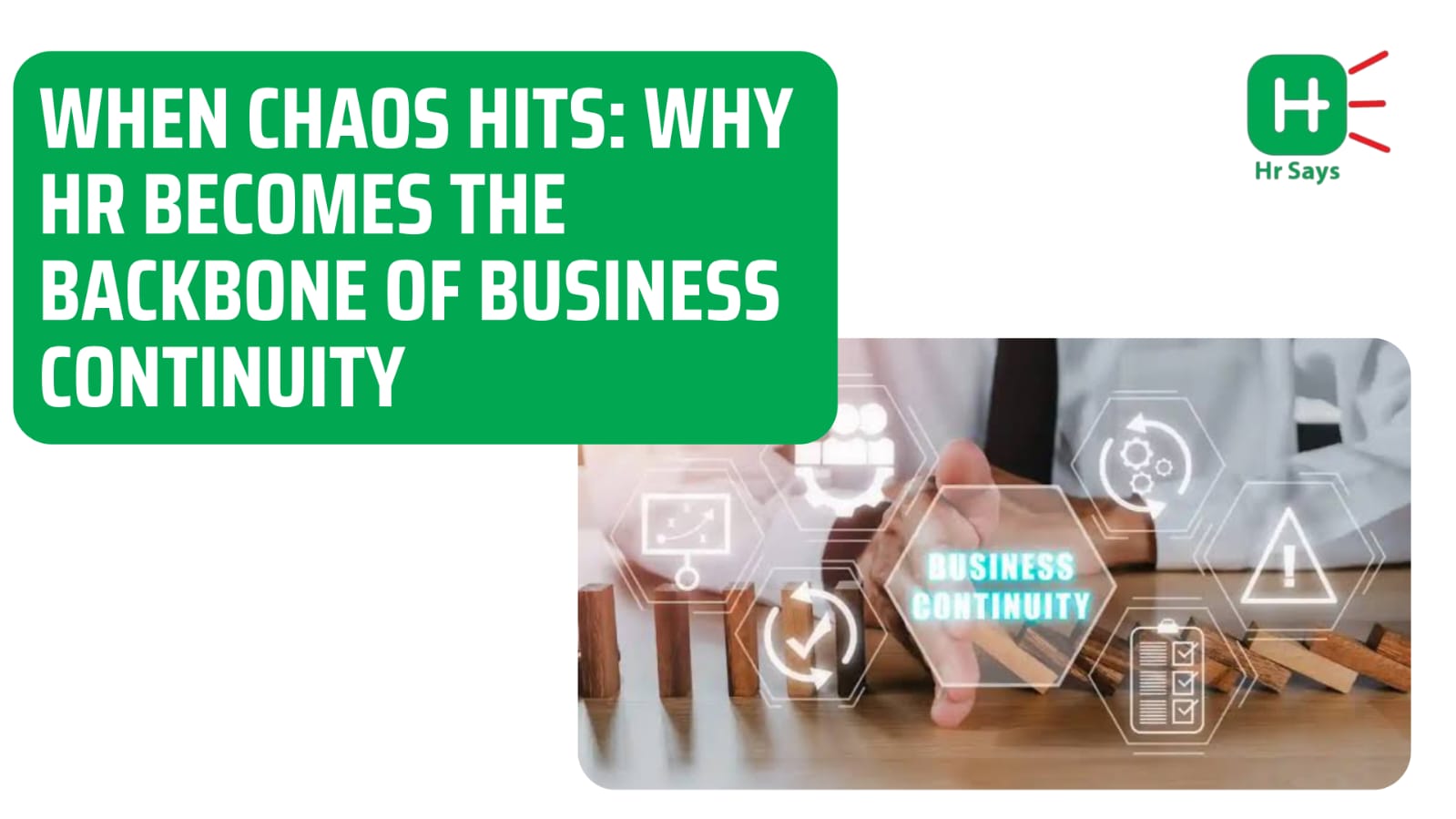What if, metaphorically or literally, the lights go out? Business continuity does not only involve servers and security plans. It's about people. HR steps in where structure meets uncertainty. In a crisis, it's the human layer that either holds or collapses. That layer is shaped, steered, and supported by HR.
The Overlooked First Responder
It’s easy to think IT or leadership teams manage continuity. But HR often acts before and beyond them. During crises, people panic. HR listens. Coordinates. Communicates.
● Who sends the first all-staff advisory?
● Who handles safety, remote work, or emotional support?
● Who tracks who’s safe, available, or impacted?
It’s often HR.
HR doesn’t grab headlines.However, without it, firms will struggle to survive.
A voice when it's quiet and a command when it's loud
Planning begins before crisis. And HR knows the internal map—who works where, who needs what, who’s replaceable, who’s essential.
● Role-specific backup planning
● Training continuity leads
● Ensuring compliance even when routines collapse
In the chaos, HR speaks calmly. Not just to comfort—but to realign people with purpose.
Policies Aren’t Enough Without People
Continuity binders? They're important. But without someone emotionally and legally equipped to enforce them, they sit unused. HR ensures that:
● Employee communication remains clear, frequent, and sensitive
● Shifts, transitions, and remote work are handled without discrimination
● Benefits, mental health, and leave policies stay active, humane, and lawful
Talent Risk Is Real Risk
When crises extend, attrition follows. Panic hiring or mass exits can follow if not checked.
Here’s where HR quietly stabilizes:
● Cross-training and internal mobility
● Retention strategies under pressure
● Managing sudden hiring freezes or ramp-ups
Not all continuity threats are external. Some start in your inbox.
Lessons Are Collected, Not Just Learned
After the dust settles, who runs the post-mortem? Usually HR—silently gathering feedback, documenting resilience gaps, and helping redesign continuity plans that account for actual human behavior, not just ideal procedures.
Conclusion
HR doesn’t just “support” continuity—it often is the continuity. When tech fails, offices close, or confusion reigns, people turn to the voice they trust most inside an organization. The one that understands policy but speaks human. That voice is HR.

 When disaster strikes, who ensures people, policies, and priorities don’t fall apart? It’s not just operations. HR takes center stage in business continuity—balancing emotional, legal, and strategic responses with silent precision.
When disaster strikes, who ensures people, policies, and priorities don’t fall apart? It’s not just operations. HR takes center stage in business continuity—balancing emotional, legal, and strategic responses with silent precision.












.jpeg)
.jpeg)

.jpeg)

.jpeg)


.jpeg)

.jpeg)

.jpeg)


